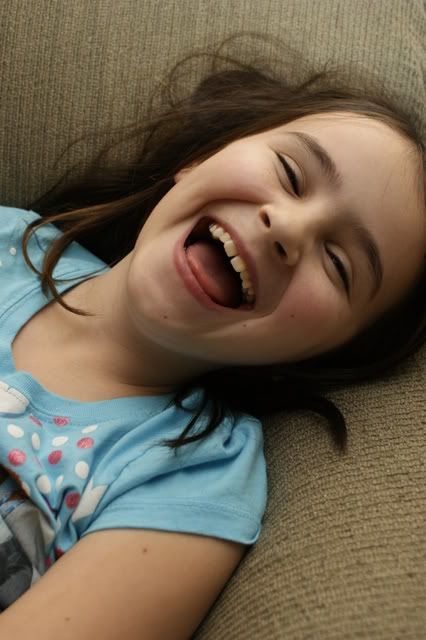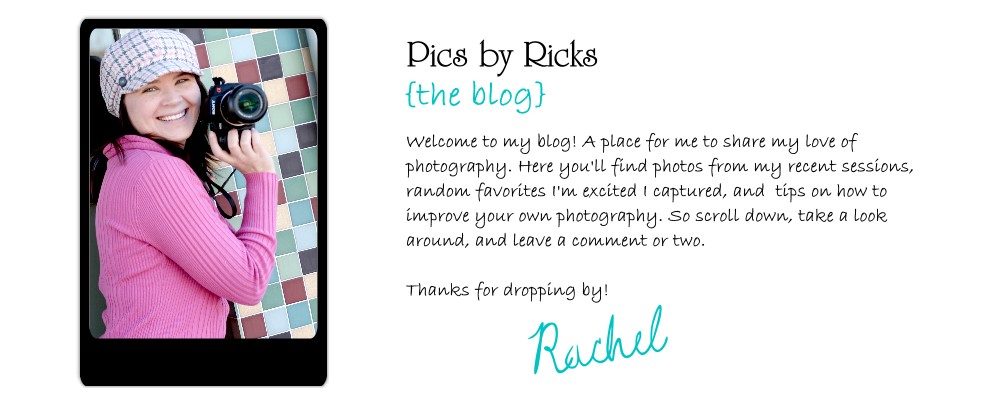Composition
Composition was probably the first thing I tried to improve on with my photography. In my opinion, composition is the fun part. Climbing ladders, balancing on the arm of a couch, and laying on the ground are just some of the crazy things I've been known to do to get a better composition. Yep, fun stuff!
This week in the lesson from 2 Peas they shared 6 different rules for better composition, but just like the pirate code, they are more of a guidline, but they are good guidlines to follow.
1. Keep it simple - eliminate distractions...watch the background/foreground for distractions, you don't want a branch growing out of the side of someone's head.
You can remove distracting elements from your photos by physically moving them out of the scene, repositioning your subjects in a better location, taking a few steps forward for a close-up shot, or decreasing your depth of field.
Composition was probably the first thing I tried to improve on with my photography. In my opinion, composition is the fun part. Climbing ladders, balancing on the arm of a couch, and laying on the ground are just some of the crazy things I've been known to do to get a better composition. Yep, fun stuff!
This week in the lesson from 2 Peas they shared 6 different rules for better composition, but just like the pirate code, they are more of a guidline, but they are good guidlines to follow.
1. Keep it simple - eliminate distractions...watch the background/foreground for distractions, you don't want a branch growing out of the side of someone's head.
You can remove distracting elements from your photos by physically moving them out of the scene, repositioning your subjects in a better location, taking a few steps forward for a close-up shot, or decreasing your depth of field.
2. Apply the rule of thirds - Mentally divide your scene into 3rds as you're looking through your viewfinder or at the LCD screen. To follow the rule you'll want to compose your photo so that your subject(s) or action is located at one of the intersecting points rather than in the middle, or dead center, of the image.
3. Keep an eye on the horizon...the rule of thirds applys to photographing the horizon as well.
Place the horizon about 2/3 of the way up on the photo to keep the focus on what is below it
(such as land or water) OR position the horizon about 1/3 of the way up on the photo if you want the focus to be on what is above it (the sky.)
4. Frame your subject...
Use elements in the foreground of your photo to frame the center of interest. Architectural elements (such as arches or fences) as well as those found in nature work well for this.
5. Fill the frame...
Allow your subject to dominate the photo (fill the frame) to give it more prominence. Keep in mind that cropping your photos in an editing program is a simple fix. It's also important to distinguish that empty space in a photo is not necessarily considered wasted space when used effectively.
6. Try a new perspective...or different point of veiw.
Make sure to examine your subject from different angles - a new view can change the perspective of the whole photo.
The challenge: play around, try them all, or combine different rules together!
Here are a few from this weekend.
I liked this perspective because it portrays a comfy feeling. This would have a totally different feel if I had taken the photo standing infront of them with them looking at the camera straight on.

In this one I kept it simple and filled the frame.

My daughter created a frame around her face with her arms and I thought this was a fun point of veiw.






1 comment:
All of them are great photos! I really love the last one. It is a perfect frame within a frame composition.
Post a Comment